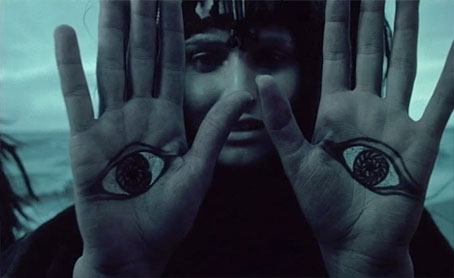
Science-fiction cinema has always suffered in comparison to its written counterparts; sets and special effects have to work hard to create believable worlds or futures, while the need to recoup enormous costs has often meant that film scenarios aren’t much better than those being written in the early days of the pulp magazines. Simplistic adventure stories yield bigger audiences and greater revenues. Computer technology has helped the effects problem but production expenses ensure that inventive or unusual SF films are scarce and invariably low-budget works. Anything too ambitious or challenging is unlikely to be funded.
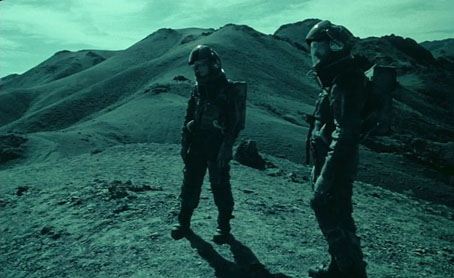
On the Silver Globe is an unfinished science-fiction film by Andrzej Zulawski that even in its incomplete state is that very rare thing: a film with a fantastic premise that doesn’t appear to have been staged for an audience at all. The film is long—over two-and-a-half hours—and much of it so disregards the conventions of commercial cinema that the immediate reaction is amazement that it exists in any form. Zulawski has a cult reputation outside his native Poland for Possession (1981), a unique horror film made when he was living in exile in Paris. On the Silver Globe was one of the reasons for his leaving the country; after two years of work in several countries, and with the film almost finished, the production was shut down in 1977 by a new vice-minister of cultural affairs who perceived a metaphoric subtext directed against the Polish authorities. The existing footage was supposed to have been destroyed but Zulawski and his production team hid the film and costumes hoping one day to shoot the missing scenes. After ten years of waiting it was decided to present the film as it was with the missing scenes filled by shots of Polish streets and countryside. A voiceover by the director describes the missing content.
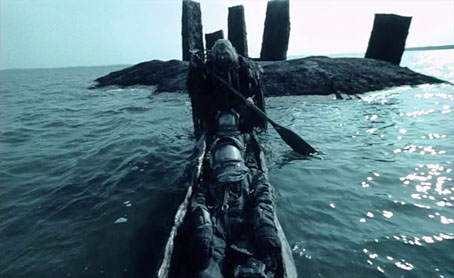
On the Silver Globe is based on the first two books of The Lunar Trilogy (1901–1911) written by the director’s great-uncle Jerzy Zulawski. The film follows the major events of the novels with the exception that the Silver Globe of the title is no longer the Moon but an unnamed, Earth-like planet. The first hour of the film concerns the struggles for survival of a group of astronauts marooned on the new world after their rocket has crashed. The footage we are watching is a point-of-view recording made on a camera the survivors carry around. The opening scenes showed this footage being given to members of a different space team. The discovery of the recordings prompts a new expedition to the Silver Globe, and it’s the story of the latest arrival, Marek, that occupies the rest of the film.
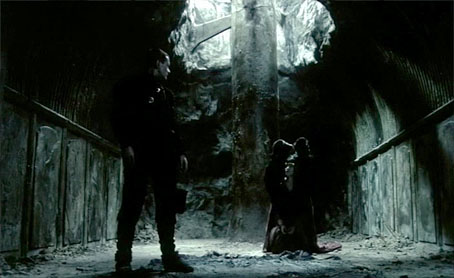
Everything the camera sees for the first hour is tinted cyanic blue which makes the footage of the new world seem suitably alien, while the single camera gives the scenes a verité quality. Zulawski uses wide-angle lenses and a fragmented editing style throughout which adds to the sense of strangeness. In a short space of time the astronaut survivors have given birth to a child which they realise is growing at a rapid rate. A few scenes later we’re several years in the future and a small tribe of incestuous descendants is now living in a village by the sea; later still there’s only one astronaut left, a man whose seemingly unnatural longevity causes the Globe people (in the novel they’re the Selenites) to regard him with fear and awe. Myths and legends about the Earth arise while the community continues to grow, becoming increasingly religious, hierarchical and prone to violence. The first part of the film ends with the discovery over the sea of a city of telepathic bird people, the Sherns. We don’t see these creatures at first but future strife is assured.
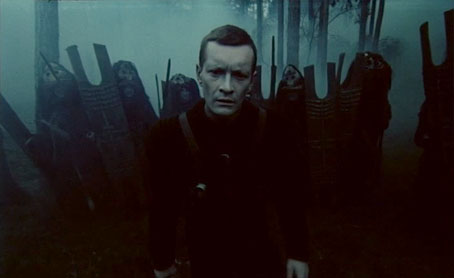
Baldly describing the narrative does nothing to convey the impression of being immersed in Zulawski’s film. Comparisons have been made to Tarkovsky but Zulawski’s style is the antithesis of Tarkovsky’s “sculpting with time” technique. The camera is often racing around with the same delirium as the actors, all of whom appear to be fully possessed by their roles. Delirium and confusion are the keynotes, with explanation at a minimum and many of the characters communicating by shouting bits of philosophy. There at least the film resembles Tarkovsky; as with Stalker much of the dialogue is superfluous and a poor relation to the unforgettable imagery.
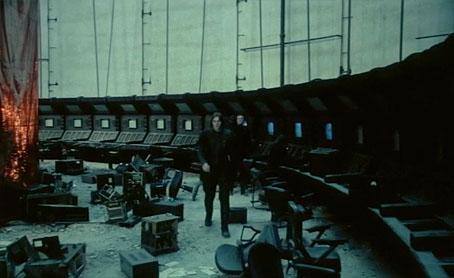
The tribal production design—all stark silhouettes and splashes of colour—is like something from Fellini’s Satyricon, or one of the comic strips from Métal Hurlant. The Sherns when they appear are ragged and shambling creatures rather like the kind of aliens that used to blunder through Doctor Who; but none of those aliens was ever shown having sex with a woman. In the second part of the film the Sherns have been interbreeding with the Globe people, and the two societies are in a constant state of war. When astronaut Marek arrives from Earth the Globe people take him to be a Messiah come to vanquish the Sherns. He defeats a captured Shern in a telepathic battle then launches an assault on the creatures’ city in a sequence that would have made a stunning climax if it wasn’t riven with missing scenes. What’s left is still fantastically strange, in part because the bird people are kept as enigmatic and unknowable presences.
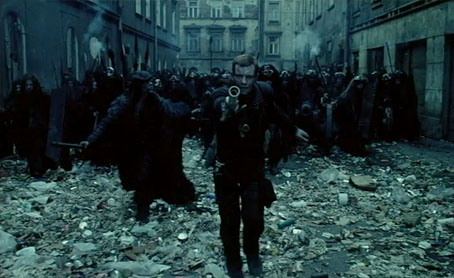
I’ve been arguing for years that a problem with SF cinema is that hardly any of it is weird enough to adequately convey a sense of alien worlds or the distant future. Properly made, an ambitious SF film would teeter on the edge of coherence, or even go over the edge, showing the audience impossible, incomprehensible things. 2001: A Space Odyssey was roundly criticised by many SF writers in 1968 for being a conservative view of the future. But Kubrick’s ending took a risk with the audience’s patience by dispensing with Arthur C Clarke’s explanation of a transition point built by unseen aliens in favour of inference and abstraction. The rest of the film is, of course, a lot more traditional which is why some of the strangest SF films to date—René Laloux’s Fantastic Planet, Piotr Kamler’s Chronopolis—have been made by animators. What’s remarkable about On the Silver Globe is that it follows its source novels closely yet manages to turn a standard space adventure into something strange and almost miraculous. We can lament the missing scenes but Zulawski’s narration and the shots of Poland in the 1980s only make the planetary scenes and the arcane rituals of its inhabitants seem all the more remote and bizarre.
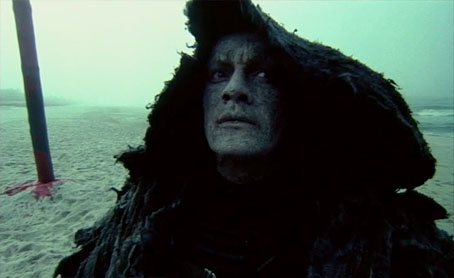
I’m indebted to Jane Weaver for the discovery of this film. Her recent album, The Silver Globe, has been playing here continually over the past two weeks, and her mention of Zulawski’s film made me curious. The Silver Globe may be heard in full here where Weaver also gives an account of the influences for each of the songs. As to On the Silver Globe, the last official DVD was a Polish release which is now deleted so you have a choice of either watching it on YouTube without subtitles, or searching torrent sites for a subtitled copy. There is a DVD on Amazon but buyers there complain that it’s a poor-quality bootleg. Zulawski’s Possession was reissued in the UK recently so I’m hoping somebody may have similar plans for On the Silver Globe.
Previously on { feuilleton }
• Ikarie XB 1
• Chronopolis by Piotr Kamler

There used to be a version with subtitles on youtube (divided into six sections), but it got taken down a couple years back. I watched the first hour and was going to come back for the second, but it disappeared before I could.
Thank you for the link to the full film (even without subtitles!).
The only thing that I think you could lose without the dialogue is the strange loop the first half tries to set up. Basically, a human habitation is dealing with people they think are native aliens, who give the humans a film of old human astronauts who crashed. Most of the first part is this film. It turns out that the “aliens” are descendants of the survivors, who have just developed such weird culture garb that they’re unrecognizable as such. For some reason one of the original astronauts lives for a long time and the human settlement folks are able to witness his eventual death firsthand.
Visually, as you point out so accurately, it’s unforgettable.
Thanks, Katy. I found a copy on a torrent site with subtitles but was still confused about that opening sequence, and the scenes near the end with the space station and the people on horseback. I didn’t mind the confusion, however, it’s things like this that make me look forward to a reviewing later.
Hi John
I’ve been following your blog for a while – it is one that i find i MUST check daily.
Just wanted to thank you for tipping me off to Jane Weaver. Listening to the Silver Globe right now and i absolutely love it!
I’ve been searching for something like this for ages!
keep up the excellent work.
All the best.
EXACTLY! Or, to pick on Interstellar: did we really have to cross the universe just to see a fistfight on a glacier?
You should check out “Burst City”. It’s a Japanese cyberpunk movie (1st generation cyberpunk, came out the same year as Blade Runner!) that succeeds as well as On the Silver Globe or Chronopolis in conveying a sense of alienation. It’s set in the future during a huge multi-day outdoor punk rock festival happening right next door to the Yakuza-protected construction of a nuclear power plant. The actual machinations of the plot are very opaque- the film carries itself purely on its energy and atmosphere.
Here’s the trailer: https://www.youtube.com/watch?v=zS4p4ihS0QE
Jamie: It’s a pleasure to spread the message. The big surprise for me was that she samples from the first album I worked on, Church of Hawkwind. I used to consider that as a minor work since it’s pretty much a Dave Brock solo album but her use of a riff has made me reappraise it.
Michelangelo: I lost patience with Nolan after Inception so I doubt I’ll see anything more of his unless he abandons some bad habits. I thought it was significant that there was talk of his brother writing an adaptation of Asmimov’s Foundation series; that old-fashioned view of the future, space, etc is an ideal fit for the Nolan approach.
Thomas: Thanks for the recommendation. My knowledge of Japanese SF is still pretty limited. I love Akira, and I enjoyed Tsukamoto’s Testuo: The Iron Man. I also enjoyed Casshern which was pretty bizarre in places. What those films have in common (and with a lot of other Japanese culture) is they all end up with two characters fighting each other. I’d like to see something where the resolution isn’t so predictable.